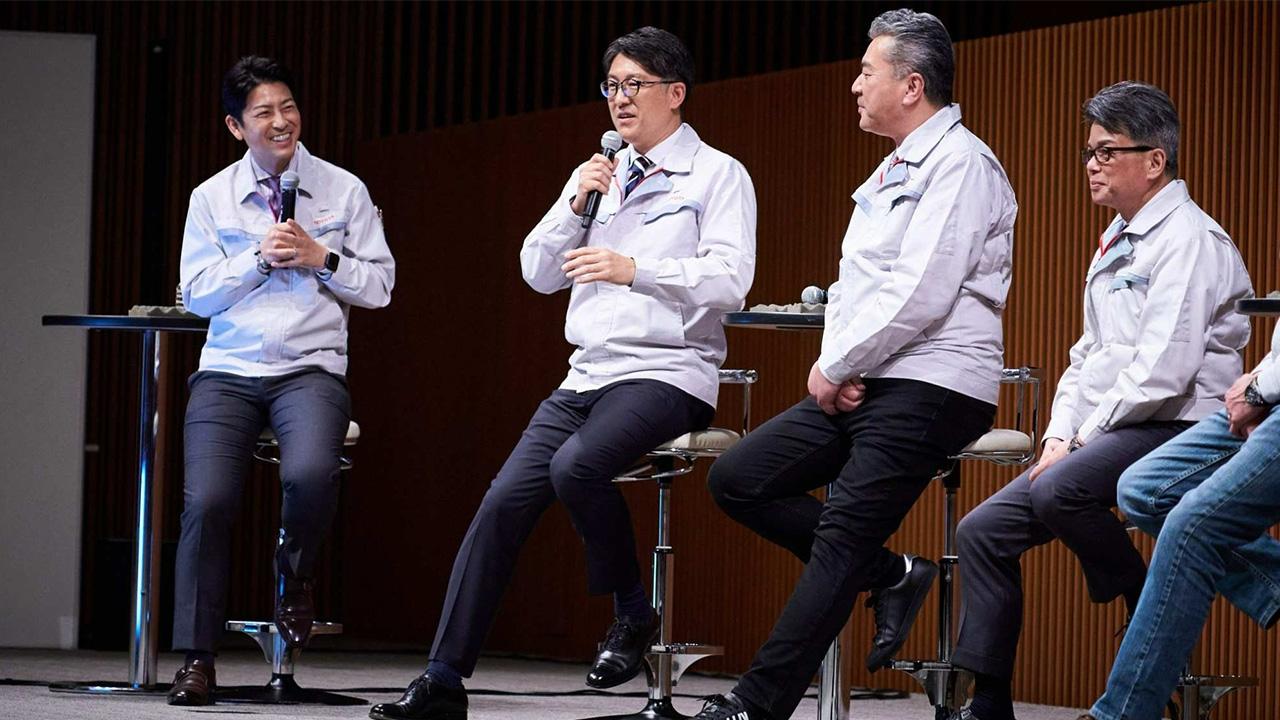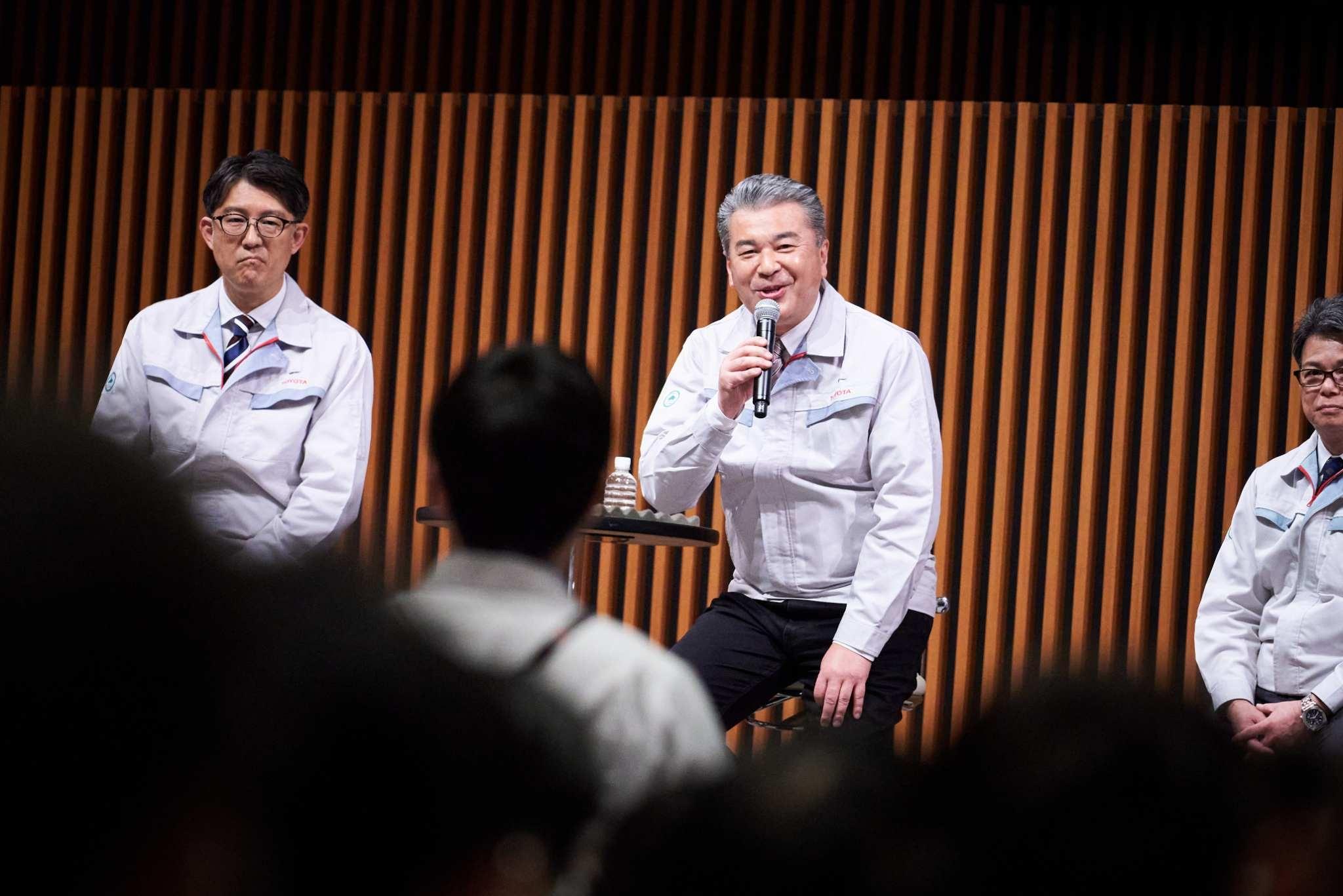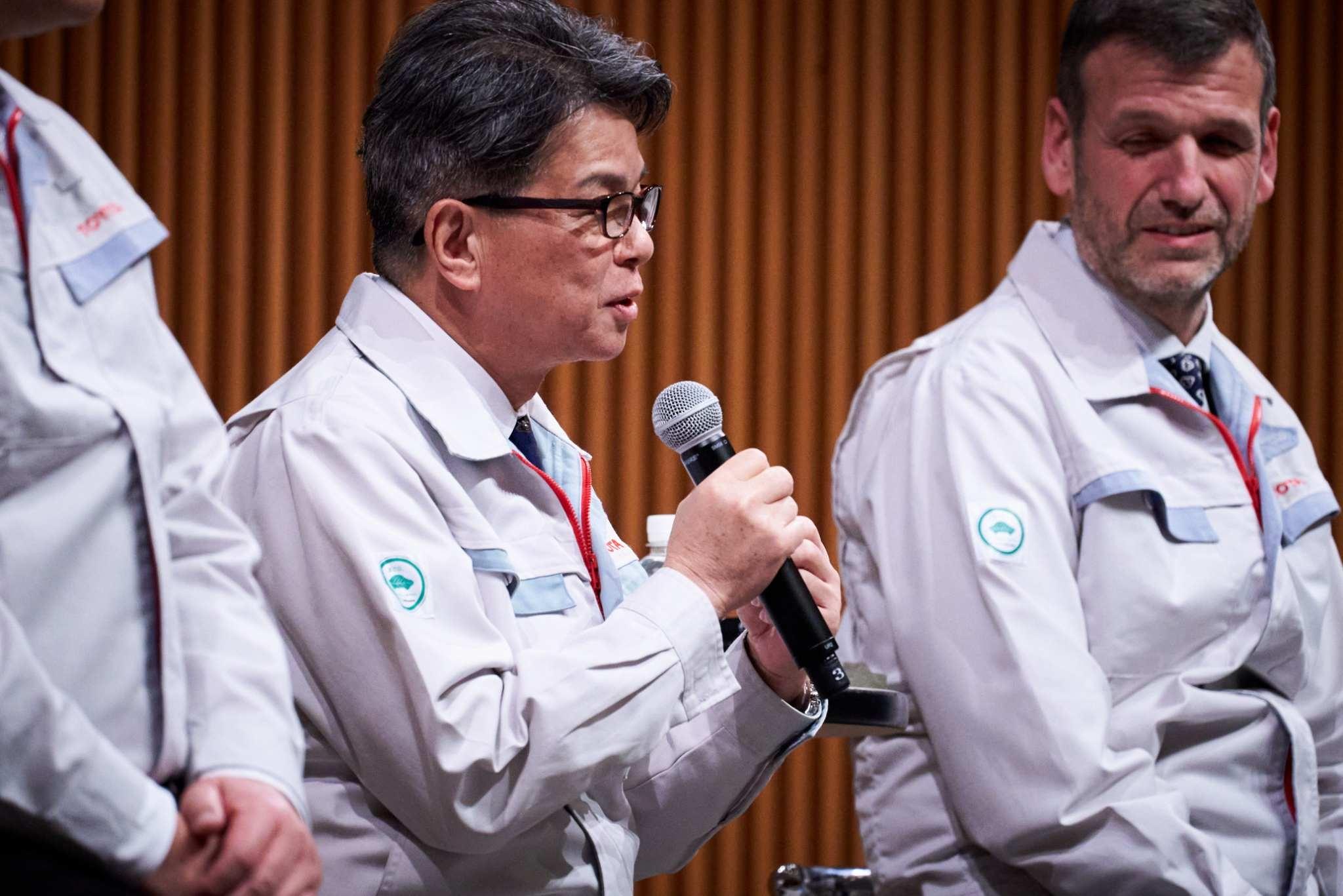
There was a policy briefing for employees before the press had their chance, and the Q&A was unscripted and uncensored. The eight executives in attendance shared their true feelings with the crowd.

On April 7, President Koji Sato held a press conference revealing the new management's corporate policies, and reporters got the chance to ask about the company’s EV strategy, the transformation to a mobility company, and more.
But Toyota employees got their chance first, at an internal policy briefing at company headquarters on April 3.
Just like on the 7 th , President Sato was joined by Vice President Hiroki Nakajima and Vice President Yoichi Miyazaki for a presentation. After that, there was a Q&A session, but unlike the media event, the questions were much franker and more direct, as befits a talk among “family.”
So, how did this new team under President Sato answer? Toyota Times offers a glimpse at the comfortable atmosphere that held sway at this Q&A.
U.S. CEO Ogawa and China CEO Ueda also joined
President Sato was joined on stage by Vice Presidents Nakajima and Miyazaki, as well as Chief Branding Officer Simon Humphries, Chief Communication Officer Jun Nagata, and Chief Production Officer Kazuaki Shingo. U.S. regional CEO Tetsuo Ogawa and China regional CEO Tatsuro Ueda also joined remotely.
After an introduction by newscaster Yuta Tomikawa, the six men present lined the stage while the other two appeared on screen.
Tomikawa passed the ball to the crowd, saying, “We're ready for some frank questions.” A hand went up as someone took the initiative to break the silence. What question kicked it off?
The excitement of changing the future of cars
—Thinking of what's coming is so exciting, and to spread the excitement, I'd like to ask, what are all of you most excited about?
Tomikawa
Right, everyone. What is it you're excited about? Let's start with Koji.
President Sato
Every day is just a series of encounters with the unknown. It keeps me excited and nervous.
I think about how we’re in the middle of a time when we're trying to change what cars actually mean, and how if we work hard, we can change the future of cars.
The sense that we're in the center of that really is exciting, isn't it?
Other members answered, talking about taking on the challenge of making ever-better cars with a new lineup and a new team, and about being able to meet in person with relaxed COVID-19 restrictions.
Then, CPO Shingo spoke up about how seeing the entrance ceremony just a few hours earlier had put him in mind of his own start at the company.
CPO Shingo
This afternoon, we had the entrance ceremony right here. About the same number of people came and sat where you're sitting, and I could see their eyes just sparkling. It reminded me of when I joined.
I am so excited about working with all these new members and taking on new challenges.

Tomikawa
Thank you, Mr. Shingo. Koji, he really is gentle, isn't he?
President Sato
Oh, yes, he's got the gentlest personality of us all!
At that, Vice President Nakajima tried to insist that he was gentle, too, to which President Sato replied, “You're fine. I think everyone knows.”
Their exchange took a lot of the tension out of the room, and hands started to go up one after another.
The meaning of “ultimate mobility.”
Staff who had made the journey from the Frontier Research Center are apparently developing robotics that could be useful five or ten years from now.
Their question clearly showed a view for the future.
—My question is, what does your ultimate mobility look like? I think that the ultimate mobility can be things that don't actually move, like Anime Doraemon's “anywhere door” that teleports you anywhere you want, or online communication. Still we make these physical objects that are cars. How would you describe “ultimate mobility?”
Vice President Nakajima
I think that everyone would have their own idea of what the ultimate mobility might be.
People and things and information moving without borders. I don't think you have mobility without “move,” of course.
That sense of thrill when you get in a car is mobility, I think, and like you just said “conveying through information” might well be mobility, too.
I think everyone will have their own definition, but (Toyota) is a good company that will unite to make it a reality.

President Sato
The question you offer is so fundamental, namely “What does it mean to move?” that it cuts right to the core.
We might see a time when what's moving isn't “us.” I think this might be a suggestion to consider that moving the environment is also mobility, which is something I think we should certainly consider.
Tomikawa
Thinking about mobility is something that touches on design, I think, don't you, Simon?
CBO Humphries
I think if you ask that question to everyone, everyone will have a different answer. It all comes down to preference. Our work is how to address that preference.
For such a difficult issue, I think if everyone had their own idea of, “wouldn't it be nice if...” we could find an answer. It might be optimistic thinking, but that's my take.
Mobility for All is not yet done
—I'd like to ask about future trends in our overseas strategy. From the perspective of inheritance and evolution, for evolution, I'd like to know what's different from the past and what you will focus on in the future.
That question came from an employee who had experience with overseas postings. Vice President Miyazaki, and the regional CEOs Ogawa and Ueda shared the same issue.
Tomikawa
Mr. Miyazaki, what do you think from the region-centered management perspective?
Vice President Miyazaki
Up to now, every region has grown in balance and open to mixing, but even as we say “Mobility for All,” the fact is that there are still people in lots of places that just aren't covered.
We have been pretty much satisfied with selling new cars, but I think we have to consider just how many people there still are worldwide that we haven't taken care of.
I think we must connect Mobility for All to “anytime, anywhere, anyone.” We have to be able to support mobility no matter the situation.
There are so many areas we still have left, and as we transform into a mobility company, that's what I want us to handle.
But, even if that's what we at the head office think, we don't see the reality in the regions, so we need everyone at the local level to share with us what kind of mobility is needed, and what people they want to support, so that the head office can offer proper responses.

Vice President Miyazaki went on to express his true appreciation for the role of CEOs Ogawa and Ueda in exchanging information with their regions.
Tomikawa
Since we’ve got them with us, let's ask those two for their own comments on evolution. Mr. Ogawa, what do you think?
CEO Ogawa
Like Mr. Miyazaki just commented, I think we still stumble at the “All” part of Mobility for All.
In North America, we've got robot taxis and Joby * on the west coast, but there are still lots of areas left to try for.
*Joby Aviation, a company collaborating with Toyota on developing and producing eVTOL.
Tomikawa
Thank you, Mr. Ogawa. So, that's the U.S., but what about China, Mr. Ueda?
CEO Ueda
Like Mr. Miyazaki said, whenever we've thought about “How should Toyota evolve in China?” we have focused on plans that Japanese people have made in Japan.
I have worked in region-centered management since current Chairman Toyoda was president, and now with this new team, I think we've finally laid the groundwork for people in China to ask themselves “What is our evolution?” and make proposals.
Now, I think we'd like to be a region that can tell head office, “We can do this, and we'd like your help on that.”
Tomikawa
It goes to show that in aiming to be “best-in-town,” evolution is possible because of a firm foundation of inheritance.

